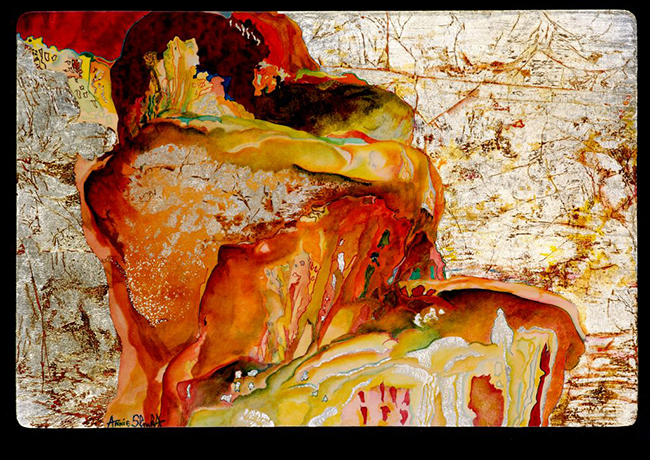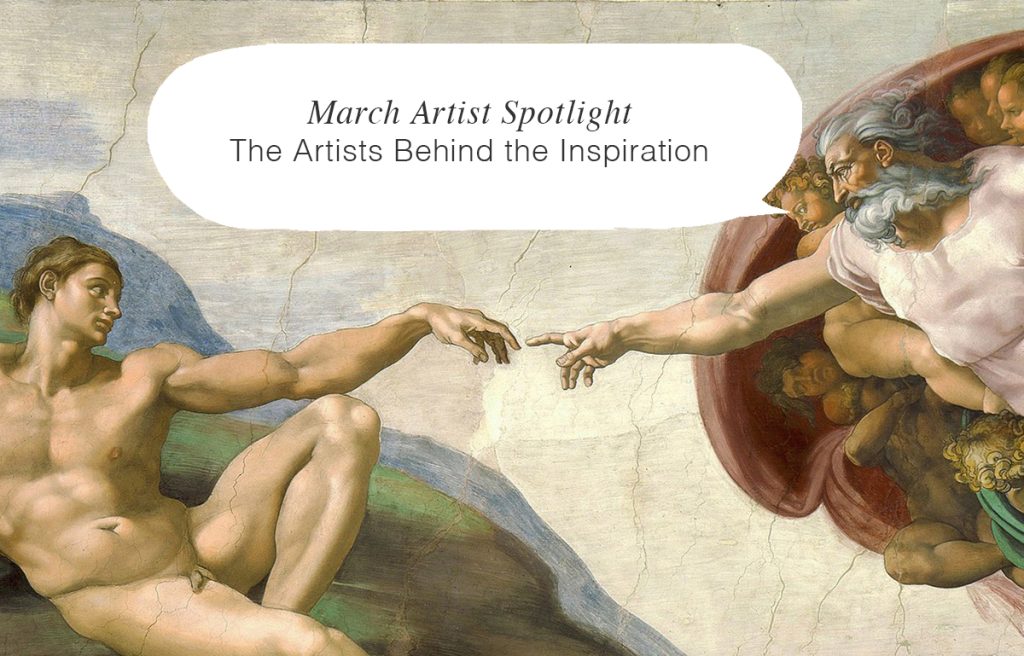Annie Sliwka is a French artist whose devotion to lacquer painting has resulted in a body of work that glows with poetic depth and a quiet reverence for nature. Working in a medium she fell in love with at sixteen, Sliwka brings a contemplative and precise approach to her art, blending light, color, and memory in compositions that feel both intimate and expansive. Raised with long stretches in the countryside, her connection to the natural world runs deep—and it shows. Each piece is the result of careful observation and deep internal reflection, followed by the slow, unforgiving process of working in lacquer. For Sliwka, lacquer isn’t just a technique—it’s a voice. A demanding one, yes, but one that allows her to translate her vision of nature into dreamlike images that challenge, soothe, and awaken. In this interview, she shares her creative roots, influences, and thoughts on making space for her art in today’s world.

Here is the artist’s interview.
1. What is your creative process like?
Since childhood, I’ve been fortunate enough to spend long periods in the countryside, immersed in nature, which amazes me with its astonishing beauty. I quickly developed a passion for it. This admiration continued to grow and enrich my life until I was sixteen, when my life was transformed by the dazzling discovery of lacquer, which would set my life ablaze. From then on, this fusion was instinctive: lacquer and nature complementing each other perfectly. My work will now revolve around this major theme.
My creative process begins through contemplation, observation, listening, perceptions and vibrations, flashes, luminous atmospheres, colors, shapes, graphics, sounds… these images and perceptions travel within me. A whole process of reflection begins. The images settle until a theme is revealed and constructed. Then comes the moment when the desire to materialize it. Making my dreams a reality becomes essential. I then begin to sketch my first life-size charcoal sketches with broad strokes. Then, based on this, I create a very precise and detailed drawing. The lacquer technique is extremely demanding and allows no adjustments. Then come the various and multiple stages of creating the work.
2. Do any personal experiences shape your work?
Yes, of course. A period in my life led me to develop an interest in antique lacquer furniture. This ten-year stay in a prestigious Parisian workshop considerably broadened my technical knowledge. It enriched my imagination to the point of dramatically evolving my palette and form of expression. Encounters with other contemporary artists, as well as certain celebrities of the past, including Klimt, Mucha, Schiele, Monet, Van Gogh, and Toulouse-Lautrec, through books, television shows, and exhibitions, have contributed to the evolution of my style.
3. What challenges do you face as an artist?
A fourfold challenge: firstly because I am a woman, but also a wife, a mother, and finally because I chose the medium of lacquer as my means of expression. I feel deeply like a painter. But it seems that these lacquer techniques are confined to an ancestral Eastern culture, and, here in France, to creations that are, let’s say, decorative, artisanal, or related to the crafts. All of this has nothing to do with my art form, in which I combine several painting techniques (watercolor, stencil, glazing), which I adapt to my knowledge of lacquer. In a way, a new art form, a new path, a new vision that is deliberately restricted, excluded from the prestigious high places of the art market and the media in France. Despite this, my career is strewn with 24 national and 5 international awards, including several GOLD medals. My art is, however, recognized by some enlightened art lovers who are not tied to the current conceptual art system, known as “contemporary.” Why should lacquer be any different from other mediums? My works are not reduced to a reductive technical discourse, which is only one constitutive aspect of my creations, not a totality; it is not the purpose of art. We do not analyze the chemistry of colored pigments when we appreciate an oil painting today. Is there only one form of expression, one possible trend in contemporary art?
4. What do you want people to feel when they see your art?
I hope that the public, informed or not, will react with sincerity and emotion, without regard for fashion. I offer them my dreamlike world. I try to offer them my poetry, dreams, calm, serenity, gentleness, and light. Fundamental feelings in our troubled times. My dearest desire is to try to recreate a world, my world, that of an original nature, intact, pure, luxuriant, abundant, pure, loved, respected, as it was before it began to be ransacked. In this sense, I want to raise awareness of this pure jewel that was passed down to us by our ancestors. This planet, our earth so tiny in this infinite universe, is our only mother to all. She is our life. She is the future of our children and their descendants. Let us love her, let us respect her. My life as an artist is summed up by this ode to nature, and to her love, by magnifying it through lacquer techniques. In general, the public reacts wonderfully.
Annie Sliwka’s work asks for presence. It invites stillness. In a world that often moves too fast, her lacquer paintings are a quiet refusal—an insistence on tenderness, care, and connection with something greater. Through light, detail, and a deep love for nature, she offers viewers a space to dream, to feel, and to remember what we stand to lose. Despite obstacles and boundaries within the art world, she continues to shape a distinct path rooted in honesty, emotion, and craft. Her vision is clear: to protect what is sacred through the slow, luminous act of making.


